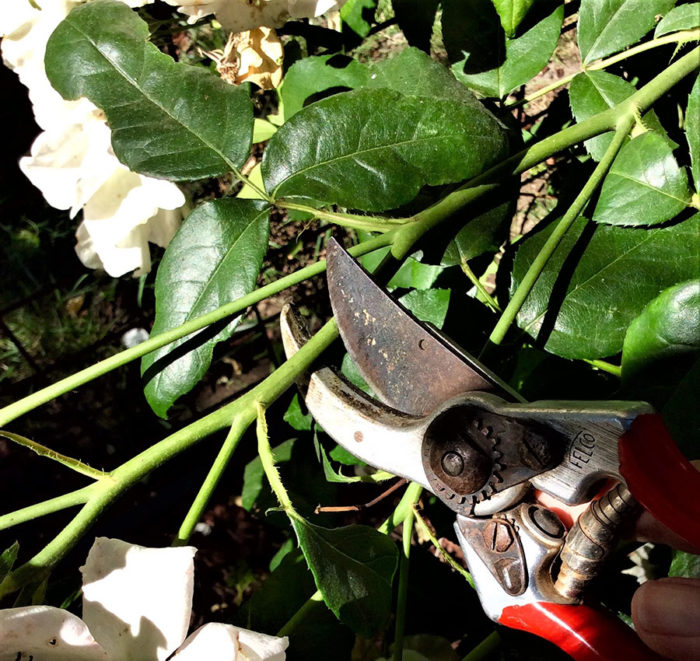
Winter is the coldest and wettest time of year here in Northern California, and January is usually the quietest month of all for most gardeners. For the budding or seasoned rose lover however, it is time to get busy!
Add to your rose collection
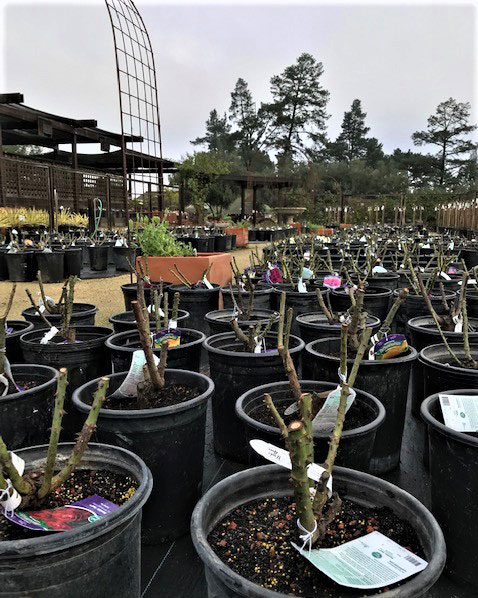
Your local nursery has just received its shipment of bareroot roses (Rosa spp. and cvs., Zones 3–9), and whether you’re looking for a hybrid tea, floribunda, tree rose, or climber, the choices available in January are at their very best. Some nurseries pot up their shipments straight away, while others sell their roses bareroot to their customers. Whether potted or bareroot, a rose is best planted while still dormant. As soon as you can after you’ve brought your rose home, dig a hole twice as wide as the roots’ spread, being sure to break the soil up at the bottom of the hole to allow the roots to penetrate deeper as they grow. Plant your rose in a mix of 50% native soil and 50% compost or E. B. Stone Organics Soil Booster. At the same time, give your new rose bush the nutrients it needs to promote healthy new roots and top growth by adding E. B. Stone Organic Rose Food and a handful of epsom salts. If gophers are a problem in your garden, protect your the roots of your new plant by planting it in a root guard or gopher cage.
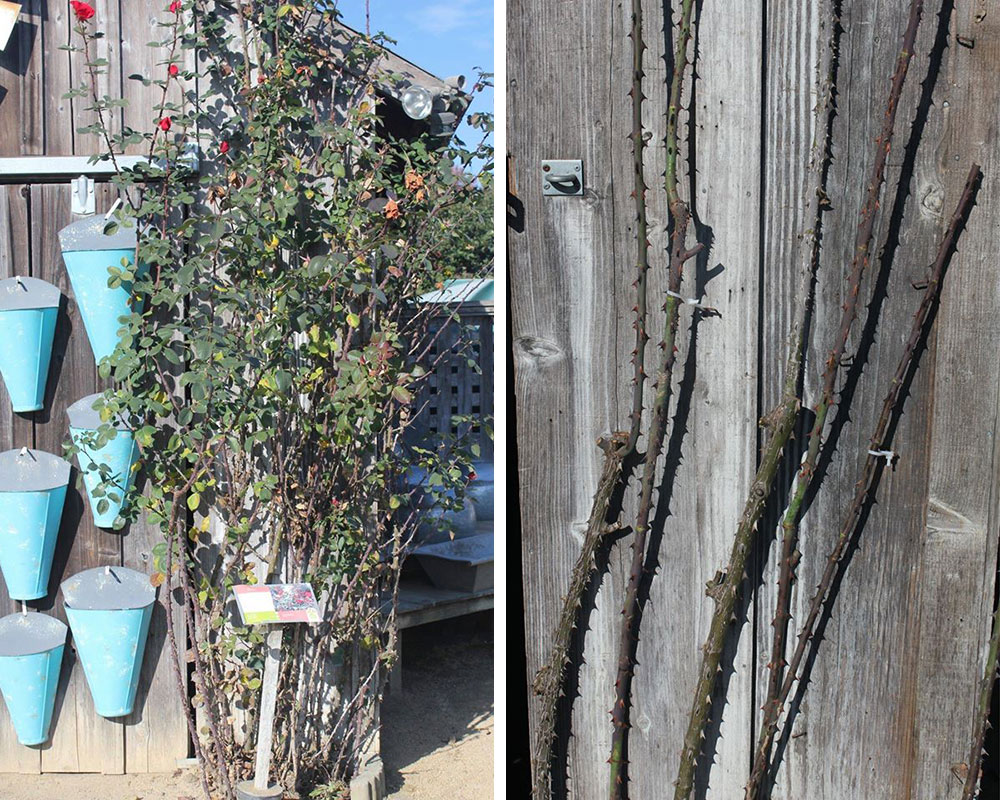
Wintertime maintenance in your rose garden
Most roses require a considerable amount of attention from gardeners to help them achieve their full blossoming potential, and much of the rose gardener’s most important work takes place during the rose’s winter dormancy. For many of us here in Northern California, this resting period occurs during the month of January.
Pruning: Even though your rose bushes may still have foliage and even a few blooms lingering on them, January is the best time to prune your roses in many parts of Northern California. Pruning in December is usually too early because it promotes new growth that is susceptible to frost. Leaving your pruning until February can be problematic as well, since possible February heatwaves may cause a new flush of growth, making the bush harder to prune. No gardener wants to get out there with pruning shears and sprays when the rose bush is already flush with beautiful new foliage.
For the long-term health of the rose and for ease of spraying to prevent future fungal or pest problems, it’s best for the rose to spend some time being dormant. During a mild winter, the weather may not get cold enough here in Northern California to actually cause the rose bush to go completely dormant on its own by January, so the gardener needs to take measures to encourage it. Pulling the foliage off your rose bush forces at least a small period of dormancy.
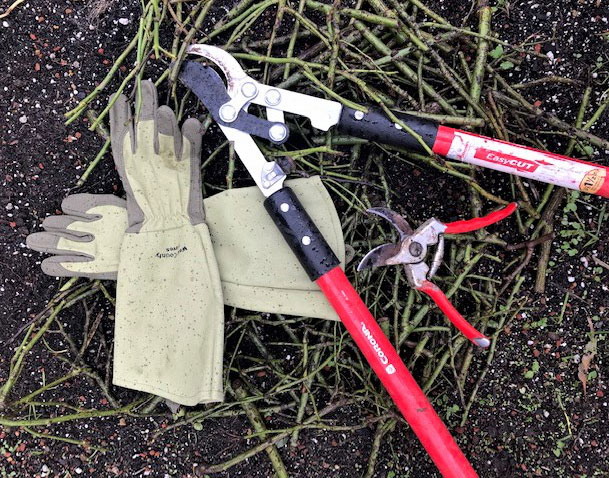
Start with this process: Strip all the remaining foliage off your rose bush to fully reveal the structure of the plant (if you can do this a week or two ahead of pruning, even better), and then start your pruning. For most modern rose varieties, blooms are produced on the current season’s new growth. Pruning promotes new growth, and the more of it you have, the more abundant the bloom production will be the following spring and summer. Pruning climbers and tree roses can be a little confusing for the beginning rosarian, so contact your local nursery or master gardener for advice or for a pruning demonstration.
Wearing protective, gauntlet-style gloves and using clean tools, cut your rose bush back by as much as half. Remove all twigs, stems, and branches crowding the center of the rose bush, and prune all remaining canes to an outside bud, which ensures outward-facing growth at bud break. Always snip off any suckers emerging from below the bud union. Finally, remove any remaining foliage from your rose bush that you may have missed earlier before commencing your spraying.
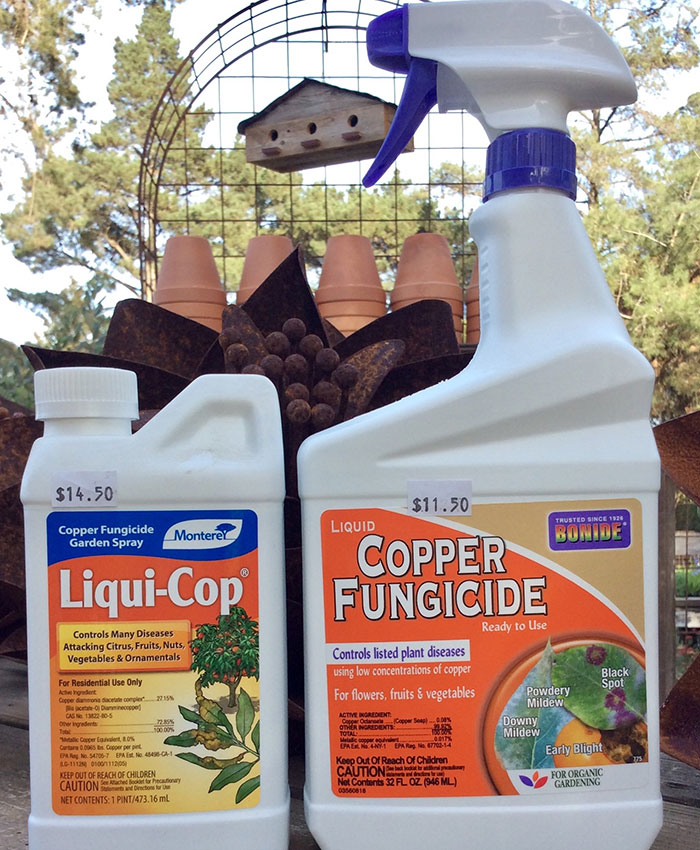
Spraying: Spray with a copper-based formula such as Bonide Liquid Copper Fungicide (approved for organic gardening) to control fungal problems such as black spot, rust, or powdery mildew. Eliminate overwintering insects with Bonide All Seasons Horticultural and Dormant Spray Oil. Rugosa roses (Rosa rugosa, Zones 2–7) are very hardy, naturally disease and insect resistant, and averse to being sprayed, so be sure to exclude them from your spraying program.
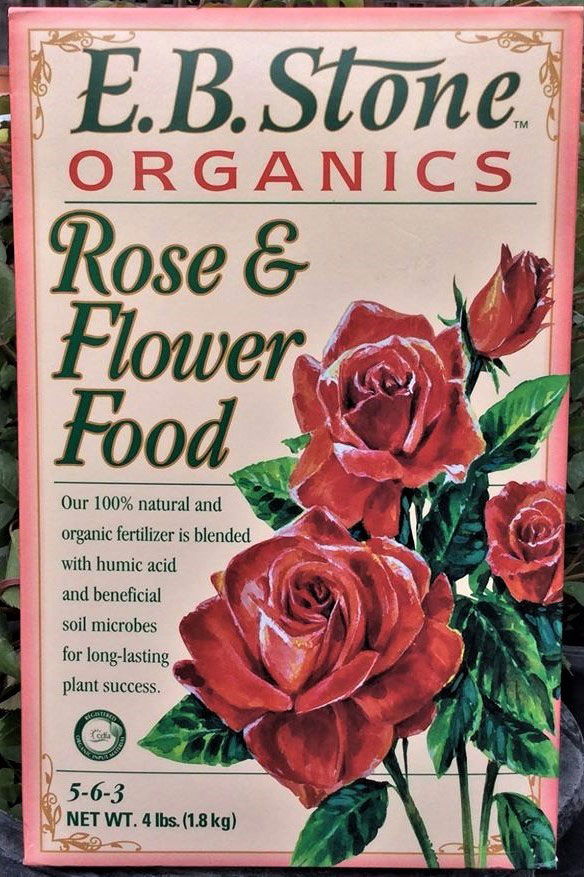
Fertilizing: Feed your roses with E. B. Stone Organics Rose and Flower Food—an all-natural, time-release fertilizer—to give your rose the nutrients it needs to ensure healthy growth and abundant bloom production. This fertilizer doesn’t immediately pump nutrients into the rose; instead, nutrients are taken up by the rose when the weather and soil begin to warm up and the rose comes out of dormancy. Additionally, work a half-cup of epsom salts and four cups of alfalfa meal into the soil around your rose bush for an added nutrient boost. Finally, mulch the soil around your rose bush, using good organic compost or E. B. Stone Organics Soil Booster, which will add even more nutrients as it breaks down over time while also conserving moisture and suppressing weeds during the coming growing season.
—Fionuala Campion is the owner and manager of Cottage Gardens of Petaluma in Petaluma, California.


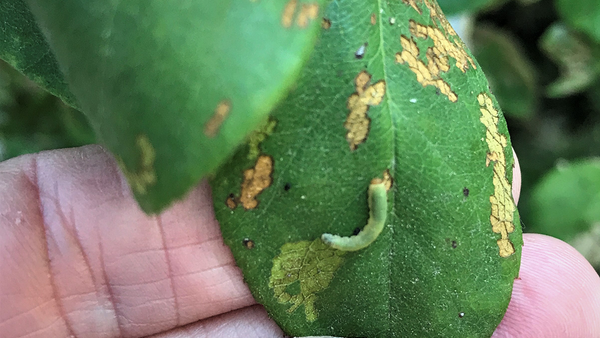
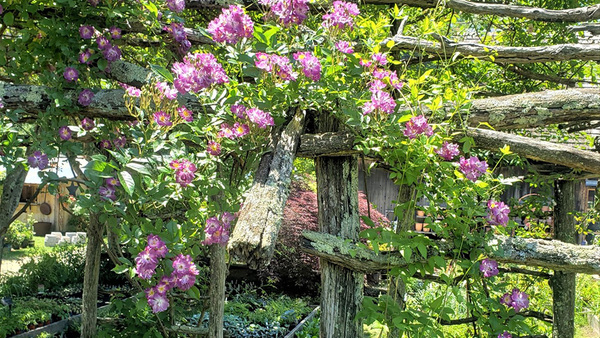














Comments
Log in or create an account to post a comment.
Sign up Log in